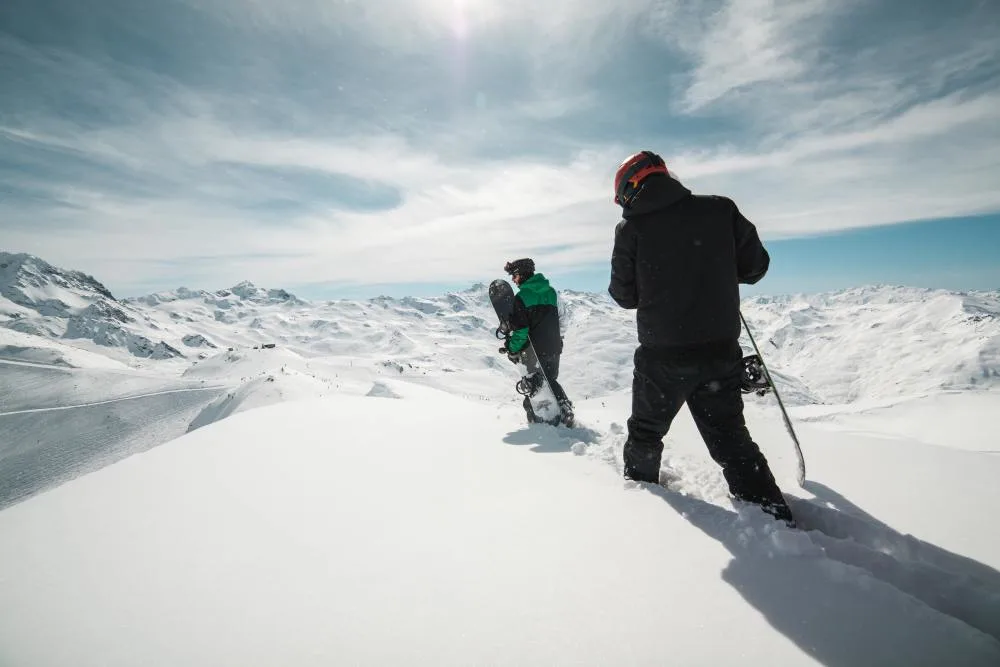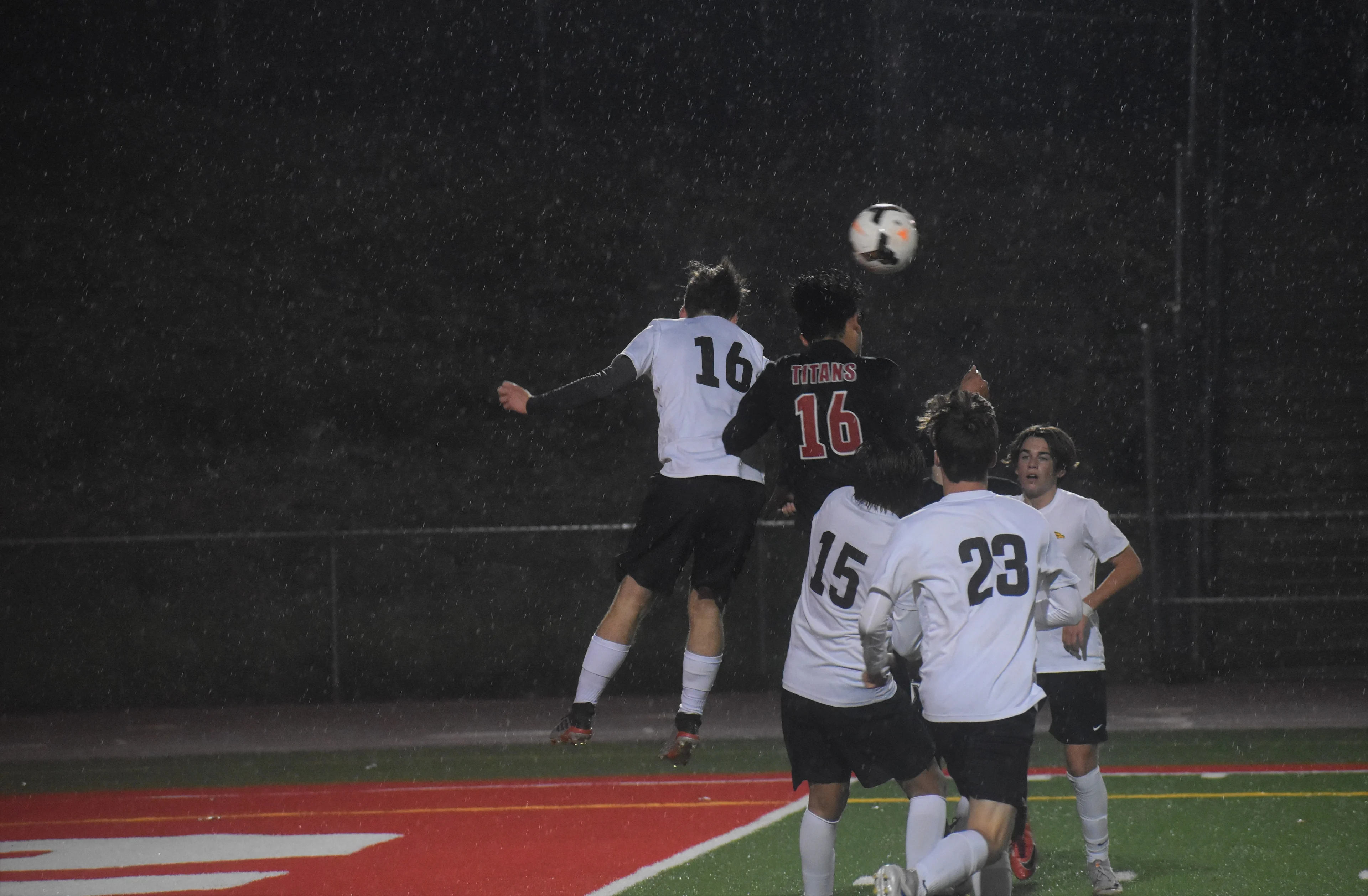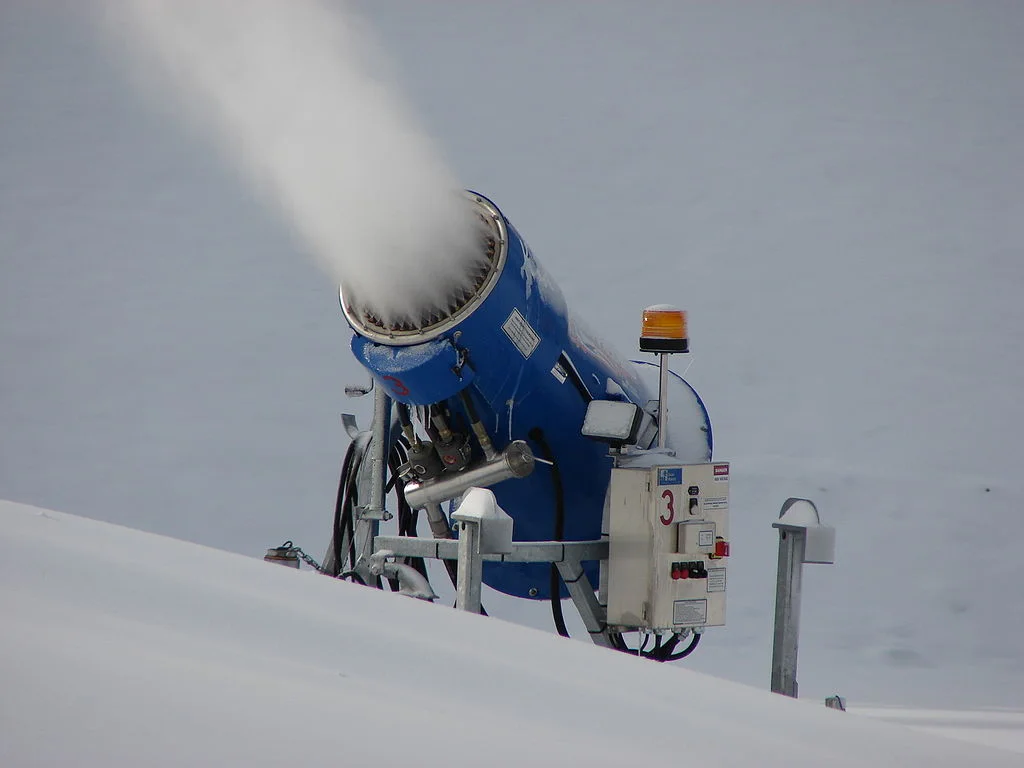
With climate change, sports face a difficult and uncertain future
Summer or winter, soccer or hockey, climate change is set to make a wide variety of games and sports harder to play and organize.
It’s safe to say that Tatum Monod knows the mountains.
Born in Banff, Alta., she began skiing at the age of 12, and after competing provincially and nationally ended up moving to Revelstoke. Her racing days are behind her, but as a filmmaker and freeskier, her admiration for the sport hasn’t left her.
“I simply love being in the mountains,” she told The Weather Network. “In the backcountry, I’m constantly making observations about the snowpack, the weather, or the line I’m going to ski. It forces you to live purely in the moment, and when it all comes together it’s the most rewarding feeling in the world.”
But those mountains, like the rest of Canada and the planet, are changing. And like others who spend as much time as possible on the slopes, Monod says she’s definitely noticed.
“When the weather was more consistent and less sporadic, I got more good days, therefore more opportunities to ski in good conditions and film,” she says. “Now you really have to take advantage when the days are sunny, stable and deep, because they are few and far between.”
Take those changing mountain conditions, scale them up to a global scale, and the planet is staring down a future where outdoor sport, for fun or otherwise, in any season, is drastically under pressure from climate change, according to a new report released a few weeks ago by the NGO Rapid Transit Alliance.

A warming world will make winter sports, competitive or for fun, harder to play. Image: Unsplash.
There can be “no normal sport in an increasingly abnormal world,” the authors of the report write, and they provide evidence of a full-spectrum climate assault on everything from where sports can or cannot be played, to the risks to athletes and infrastructure.
Hotter summers, they say, will make competing outdoors increasingly dangerous for athletes, and already there has been an uptick in athlete hospitalizations, along with increased cancellation or alteration of sports: in 2019, for example, organizers opted to nix the New York City Triathlon, and the organizers of the 2020 Tokyo Olympics were forced to move some races to more temperate locations far north of the sweltering capital.
“Once you start hitting 33 to 35 centigrade and you are playing sport, it’s all bad news, and there are going to be a lot more days like that in the global sporting calendar in the next few decades,” lead author David Goldblatt wrote.
Those temperature extremes don’t even take into account the impact of extreme weather: The report says a quarter of English league soccer grounds will experience flood events each season, and one in three British golf courses will be at risk of damage from rising sea levels.
Those challenges definitely won’t be unique to the British Isles, and the report names Toronto FC’s BMO Field as one North American venue that would be “part flooded on an annual basis.”

More, and more frequent, severe weather will make uncovered outdoor games a challenge to organize. Image: Unsplash
BALMY VANCOUVER GAMES WERE A GLIMPSE OF THE FUTURE
At the other extreme, sports that rely on consistent cold and/or snowy weather will be under serious threat as well.
In this case, the report relies heavily on observations of recent winter Olympic venues, and concludes that half of previous host cities would be “unreliable” going forward.
Ten years ago, the organizers of the 2010 Vancouver Winter Games were already struggling with the effects of what was then the warmest winter weather on record, and the 2014 games in Sochi, Russia, were warmer still.
In its annual 2010 weather review, Environment Canada said a promising start to the season was quickly undone as the games approached.
At Whistler-Blackcomb, the site of the planned downhill ski events, a record five metres of Alpine snow fell in November 2009, and the resort’s November 14 start date was its earliest-ever. At Grouse and Cypress Mountain near Vancouver, the planned snowboarding and freestyle skiing events looked like they would go ahead with promising snowpack.
But by the New Year, Environment Canada says, a combination of weather factors, from a warming El Niño to a series of “pineapple express” storms laden with warm Pacific moisture, sent organizers scrambling to cope with conditions that made the city feel more like April than January. Organizers tried to keep on top of things, but in vain, even with gargantuan efforts, such as at Cypress Mountain:
“Up to 300 workers toiled around the clock, moving 9,000 cubic metres of snow by hand-shovelling, trucking, bulldozing and choppering it in from stockpiles up to 250 km away. They brought in straw bales and wood to shape the course, used dry ice embedded in the moguls and aerials’ ramp to impede the melting, and spread urea on the snow surface to preserve and bind it, only to have a continuous onslaught of heavy rain and warm winds eat away at the fruits of their efforts.” -- Environment Canada.

The use of snow cannons is likely to become more widespread as mountain snowfall becomes more sporadic. Image: Wikimedia Commons
There were some good stretches of suitable weather, but to say the 2010 Winter Games were a challenge for organizers would be an understatement. And as it happens, one feature of climate change means more inconsistent weather, such that once the games were concluded, proper snowy conditions returned -- the slopes of Cypress Mountain were “waist deep in fluffy snow” five weeks after the closing ceremonies.
But the games aren’t for organizers: they are for athletes in their physical prime, looking to prove themselves before the eyes of the world. And between Vancouver and Sochi, that goal has become harder and harder.
In Vancouver, not only was there a lack of snow, what snow there was was heavy and wet, making it harder to ski. The result, the report’s authors write, was that the first 10 athletes to start in any given competition were far more likely to earn a medal than those who followed them -- not only due to skill, but because their later competitors were stymied by the degrading racing conditions.
That’s if they even made it to the finish line. In 2010, the report says, the number of athletes who actually completed alpine and freestyle skiing events, along with snowboarding events, fell by five per cent -- and injuries were up nine per cent. The Sochi Paralympics saw a sixfold jump in injuries.
WATCH BELOW: COVID-19 BRINGS CANADIAN SKI SEASON TO AN EARLY END
WHEN SPORT ITSELF MAKES CLIMATE CHANGE WORSE
Sport isn’t only fun and games: it’s big business.
Just how big varies from measurement to measurement, but the report’s authors cite a study that estimated its total value at almost $500 billion in 2018, expected to exceed $600 million by 2022. Part of that, they add, involves corporate sponsorship by fossil fuel companies.
Like any other economic sector, the report’s authors say, it has its own CO2 emissions, from operations and the travel-intensive nature of sport for both fans and athletes, which they estimate could be as high as 350 million tonnes. In the global scheme of things, that doesn’t sound like much -- in fact, the report says that comes to around 0.6 per cent of the world total. However, it sounds less insignificant when compared to emissions from actual countries, which in this case would be the equivalent of Spain, a nation of 47 million people that is the 15th largest economy in the world.
“Either way, or somewhere in the middle, at this perilous moment in our climate and planetary history, this is too much,” the authors write.
Aside from emissions, there’s other footprints as well, such as localized environmental damage from sport infrastructure, and impacts from one-off extravaganzas such as the Olympics. The report cites building on Indigenous land in British Columbia for 2010, “tearing up” a national park in Russia in 2014, and cutting down large swaths of an ancient forest in South Korea for 2018’s Pyeongchang games.
ATHLETES AS CLIMATE CHANGE ROLE-MODELS
As much as global sport is a part of the overall emissions problem, the report’s authors actually end on an optimistic note on how much the sector can actually end up taking the lead on the kind of transformation needed.
Among the reforms they suggest, the lowest-hanging fruit is to end fossil fuel sponsorship of the industry. A harder task is “rapid decarbonization” of global sport, with a net-zero emissions goal by 2030.
The authors aren’t blind to the institutional difficulties of convincing the big players in the industry to come on board, from reducing travel emissions to retooling existing infrastructure like stadiums to cut their carbon footprint. They do note some progress, such as the German Bundesliga’s ongoing efforts to get to carbon-zero.
On a global scale, the International Olympic Committee (IOC) already committed in 2020 to make games after 2030 not only carbon-neutral but carbon-negative -- although it has little power to force that transition, and the report notes Athens, for example, met almost none of its environmental commitments in 2004, and is one of the worst examples of Olympic infrastructure lying underused after the show is over.
Aside from tougher commitments to bring down emissions, the report says real effort by sports organizations and athletes could be a catalyst that convinces much of the rest of society to follow suit.
“Sport provides some of society’s most influential role models. If sport can change how it operates to act at the speed and scale necessary to halt the climate emergency, others will follow,” Andrew Simms, coordinator of the Rapid Transition Alliance, says. “If its players also speak out and say they believe clean air and a stable climate matter, millions more will see the possibilities for change. It will not only send a message of hope for the wider world, but it will help to guarantee a planet that is safe for sport.”











